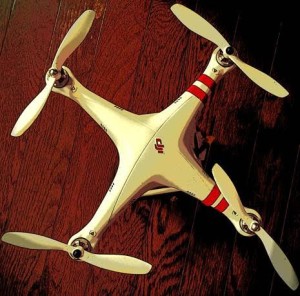 As a kid, I was really taken by Sputnik, a shiny Soviet satellite that circled the earth, and then I was captivated by anything having to do with the American astronauts, crossing the airless dark void, leaving earth behind, to walk on the moon.
As a kid, I was really taken by Sputnik, a shiny Soviet satellite that circled the earth, and then I was captivated by anything having to do with the American astronauts, crossing the airless dark void, leaving earth behind, to walk on the moon.
I was equally fascinated, however, by the lower stratospheric aerodynamic marvels of Igor Sikorsky who made the most amazing helicopters – the most massive heavier-than-air machines that hovered like humming birds.
In May, on my birthday, I became the proud owner of a remote control quadcopter, the Phantom, more popularly known as “a drone,” of course, quite smaller than the tiniest Sikorsky helicopter, but amazing in its own way, hovering at eye level right in front of you, brushing your hair back with the surprising force of its spinning rotors, carrying a photographic payload that takes high-def pictures, when the drone shoots straight up at impressive speeds to a 1,000 feet and higher.
Once you’ve assembled this flying machine, requiring that you have actually read the instructions, it soon becomes clear that the average drone is light enough by weight that you have to become adroit at yaw (think rudder control or angular velocity), roll (left-right) and pitch (front/back) to surf the slightest wind pressing against your light weight drone. (You can study my early efforts on YouTube – 1st – https://youtu.be/_YnZmJmnb-4, and 2nd – https://youtu.be/WF0ga_iYaM8 ).
In January of this year, there was a big flap about how the White House radar, intended to detect flying objects like planes and missiles, missed entirely a drone like my own that crashed into a tree on the South Lawn about 3 AM. What I find entirely credible is that the owner of the drone said he lost control of it – and lost control of his privacy in the bargain. For good reason, the tyro drone operator was not charged with any crime.
But that’s the boundary of drone control, when it tends to compromise security or safety.
The Federal Aviation Administration (FAA) has been struggling to rein in careless drone flights, used by their operators, as counterfeit Goodyear blimps, at sporting events, or flying them near airports; as a result, drones are now banned near open air stadiums with 30,000 or more spectators.
In Virginia, neighbors are concerned that drones may fly over their property, crash into their homes, strike them, or otherwise intrude on their expectation of privacy.
The most toxic example I’ve seen is how one operator mounted a gun on a drone.
This technology is not going away. There is going to be some challenging legislative line drawing in the years ahead balancing security, privacy and safety with commercial innovation.
Last month, the FAA gave a real estate broker in Nevada permission to use a drone to take aerial photos and videos of construction sites, homes, commercial buildings and other properties for marketing, and mapping.
Among the strictures for commercial use will be age requirements for operators, line of sight control, daylight flight, weight limitations on the drone (less than 55 pounds), and height of flight.
In April 2015, the FAA authorized Amazon’s request to research home delivery using drones. The parameters are somewhat disconcerting – 400 feet above ground, traveling at 100 miles an hour over private property, and within sight of the remote control pilot, but 500 feet away from any other people. If the drone loses contact with the pilot or GPS signal, it must return to a predetermined location.
My little hobby drone is a simple exercise. But we must brace ourselves for the necessary challenge – what exactly we’ll allow these little marvels to do.
